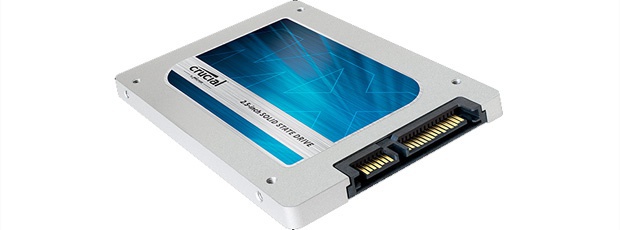Week in Tech: Alienware's Non-Steambox, SSD No-Brainer
SSD? JFDI
Can there be any of you left not running an SSD as your main boot drive? If so, do not pass go, do not worry about M.2 and SATA Express, do not collect 200 units in non-sequential, unmarked local denomination. Just buy a Crucial MX100. It's now on sale with the 256GB effort yours for just £78 / $109. If you don't do it, I shall sulk. Meanwhile, it turns out Alienware is pressing ahead with its Steambox thingie in spite of Valve's foot dragging. Consequently, Alienware now plans to sell its Steambox without SteamOS or the Steam controller. Er, what? Oh, and there's a spot of good news concerning Intel's new Devil's Dumplings CPUs. They're confirmed compatible with a bunch of existing 8 Series motherboards.
Finally, home build versus factory built. Used vs new? What are your preferences and why? I'm planning on sourcing a pre-built PC from one of the UK's better system builders in the next few weeks and comparing it to the home-built option using both new and used components. Speak now or forever hold your peace. At least, don't complain if I've missed something you wanted to know!
That Crucial MX100 SSD, then. Covered it before. So all that remains to say is this. If ever there was a no brainer, this is it.
Oh, and a disclaimer. Other brands of SSD are available. Some may be faster. Some might just be cheaper. Hell, they might be faster and cheaper. But for me the Crucial MX100 is such a no brainer because it's fast-enough drive from an outfit that isn't going to go bust overnight and has a decent rep for long-term reliability. And it's all at a price you might beat, but only by a bit.
It's a zero effort, low-risk decision. It's the drive you buy when you want to just buy an SSD and sod all the research. If you haven't already gone solid state, you are so going to thank me.
So that Alienware Alpha Steambox. New details have emerged. We now know the US price, namely $549. It'll come with an Xbox 360 wireless controller (thanks to Valve's decision to delay the Steam controller). It's got an Intel Core i3 processor and Nvidia 'Maxwell' graphics (I'm guessing GeForce GTX 750 or 750 Ti). Then there's 4GB of RAM, a 500GB hard drive (SSD highly unlikely) and direct HDMI passthrough for console-esque ease of use and compatibility with multi-box home ents systems.
And here's the twist. It's not actually running SteamOS. It's running Windows with a custom console controller-friendly interface. Uh huh. So, that's the two key things that define a Steambox. And it doesn't have either.
Frankly, the price doesn't look that great compared to the latest consoles. The spec doesn't look that wonderful compared to a home-build budget gaming box.
Indeed, the whole Steambox project has seemed somewhat precarious from the get go. What's more, in a funny sort of way, Valve is the worst company to be running the project.
It's used to being able to set its own agenda. Steam as a games distribution platform is oppressively dominant. When it comes to its own games titles, it can more or less release as it sees fit, confident in the knowledge that adoring fans will wait and wait and still lap it up.
 Fancy bindings all very well. When can we bloody buy it?
Fancy bindings all very well. When can we bloody buy it?
But I'm not sure anyone is really on tenterhooks waiting for Steamboxes to show up. Likewise, I'm not convinced the whole Linux thing is motivated by a belief it's the best option for gaming as opposed to a power play versus Intel.
Big, fabulously successful companies coming unstuck when they try to do something well outside their core competence is a common theme. And with every new delay and every seemingly contrary strategic move, it makes me wonder. Is this the project that reveals Valve's limitations?
Or maybe Valve's got it all worked out.
Anyway, Intel's Devil's Dumplings chips, as they're not called. I speak of those Haswell refresh stopgap chips designed to distract us all from the glaring fact that the 14nm Broadwell family is going to be about a year late to market.
It turns out they are compatible with a wide range of existing motherboards based on Intel 8 Series chipsets, subject to a BIOS update. Yay. See the full list of supported motherboards here.
Finally, DIY PC building versus paying someone else to sort it out. What are the pros and cons? I've got my own take on that. But before I unload an opinion bomb, I'd be interested to hear about your experiences and preferences.
 No cable spaghetti? Can't be DIY
No cable spaghetti? Can't be DIY
As a tech journalist I can be a bit blasé about PC components. I've got CPUs knocking about in ornamental bowls on about the scale normal people distribute loose change. If something dies, I just swap it out.
But I do remember my first home PC build. I remember the terrible threat of static electric discharge (well, as I imagined it), the frustration when things didn't work, the impotence of not having spare components to isolate any issues.
Put simply, I'm asking you for a reality check before I tell you how easy it all is. Fire away.

